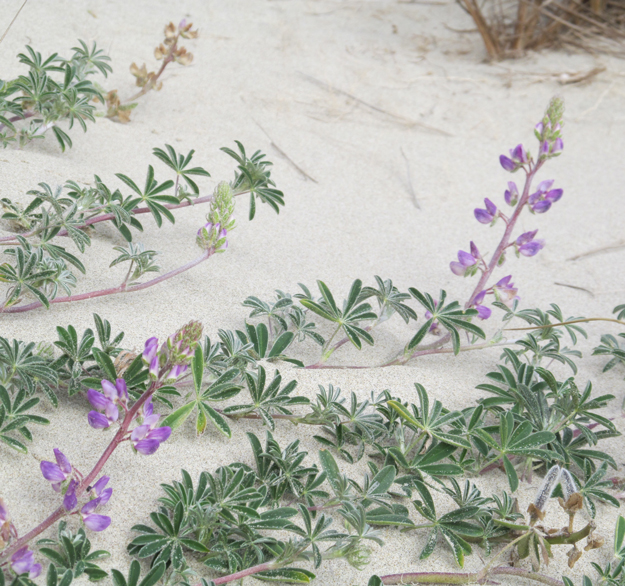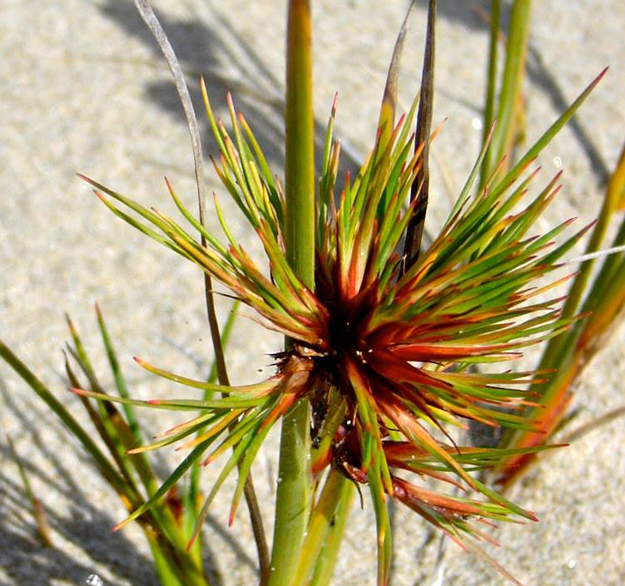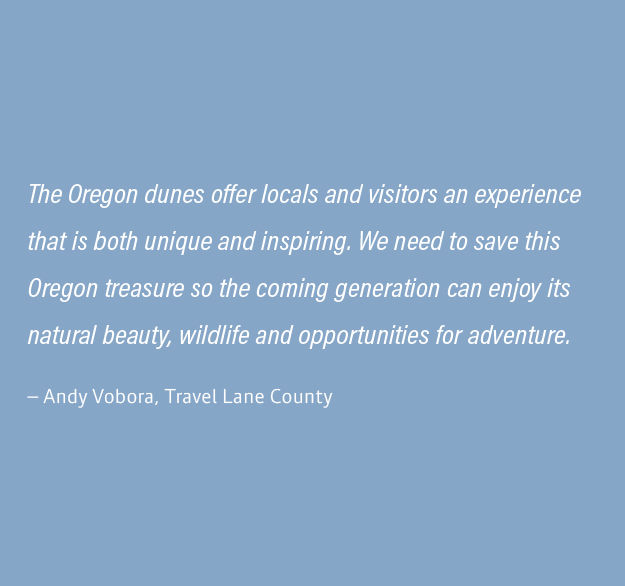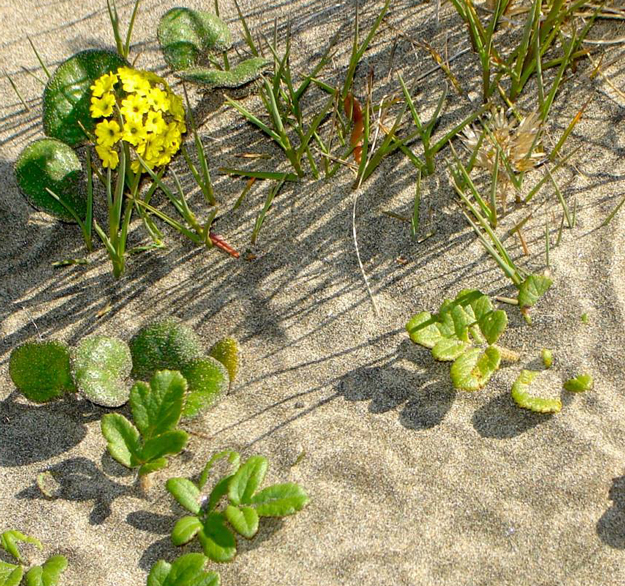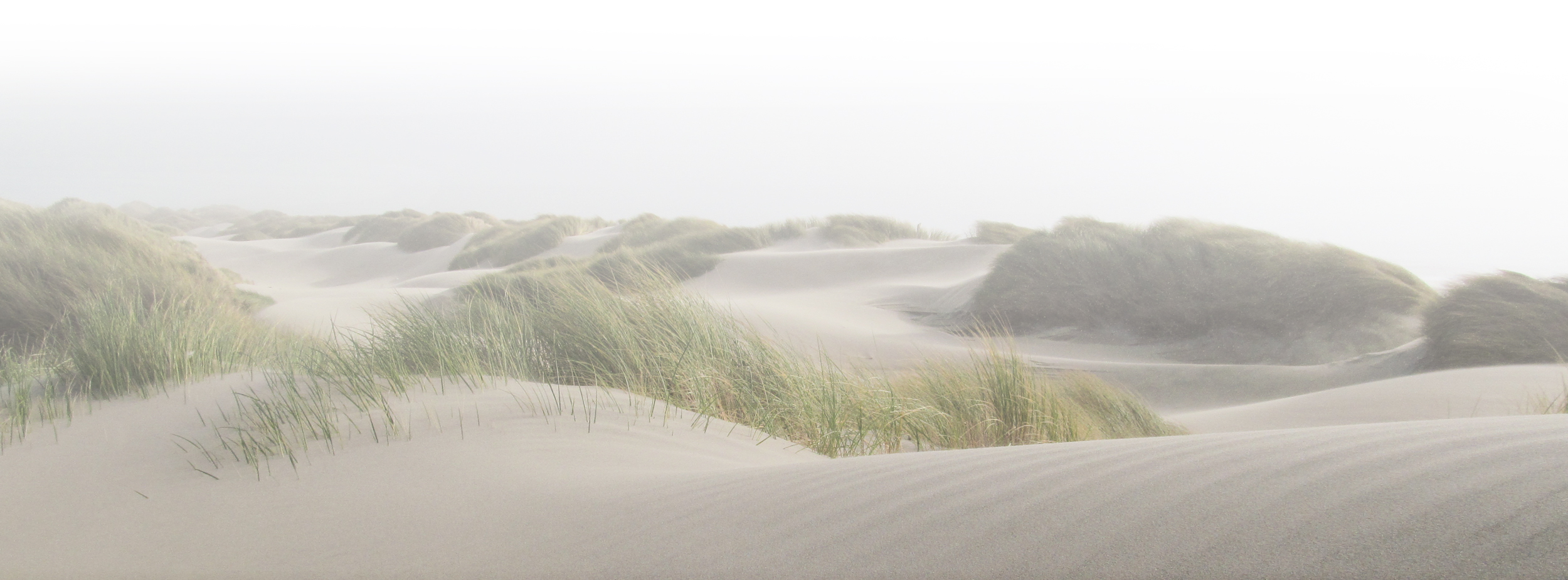Plant life on the dunes
A 19th century explorer may have looked out across the expanse of sand and seen little life – some grass blowing in the wind, copses of shore pine, a sandpiper near the water’s edge, small wetlands dotting the sand. Most of the land was covered by massive sand hummocks and dunes.
If he had looked more closely he would have found pockets of a complex ecosystem, full of life, and like nowhere else. Ecologists who have studied the dunes have been surprised by what they find. There are plants that grow nowhere else, having made the shifting sands their home. Pink and yellow sand verbena once dotted the open sand beaches, and can still be found in isolated areas.
Upon close inspection of a sand dune you may find a patch of sand fescue or seashore bluegrass, both adapted to this sandy environment. Northern bog club moss is found in the wet deflation plains.
You also can find common species in uncommon arrangements. Plant communities, or collections of plant species growing together, exist on the dunes and nowhere else on the planet. Shore pine and bearberry grow side by side, while Sitka spruce and slough sedge keep each other company.
Zoom ahead to today
A thin sandy beach gives rise to a massive wall of grass, with waves of green interspersed with open sand pitched here and there until you reach the forest edge. The motion of the dunes has been replaced by the march of non-native beachgrass – the unintended consequence of a century-old attempt to stabilize the dunes.
What decades ago was mostly open sand with an isolated tree island and some sparse vegetation, has now become a thick swath of shrubs and trees. Without intervention, it will eventually become mature forest, then the dunes will be lost forever.



